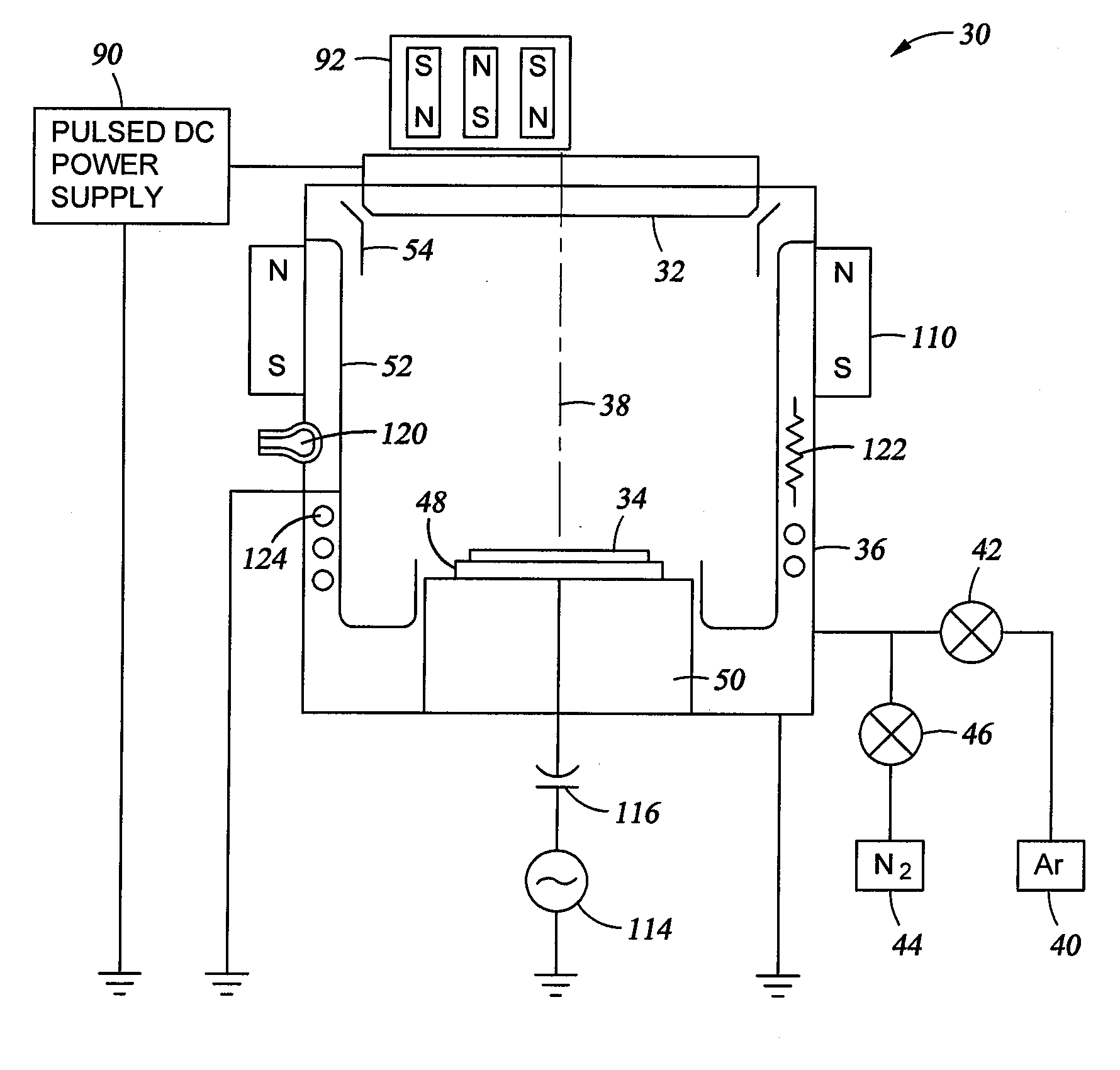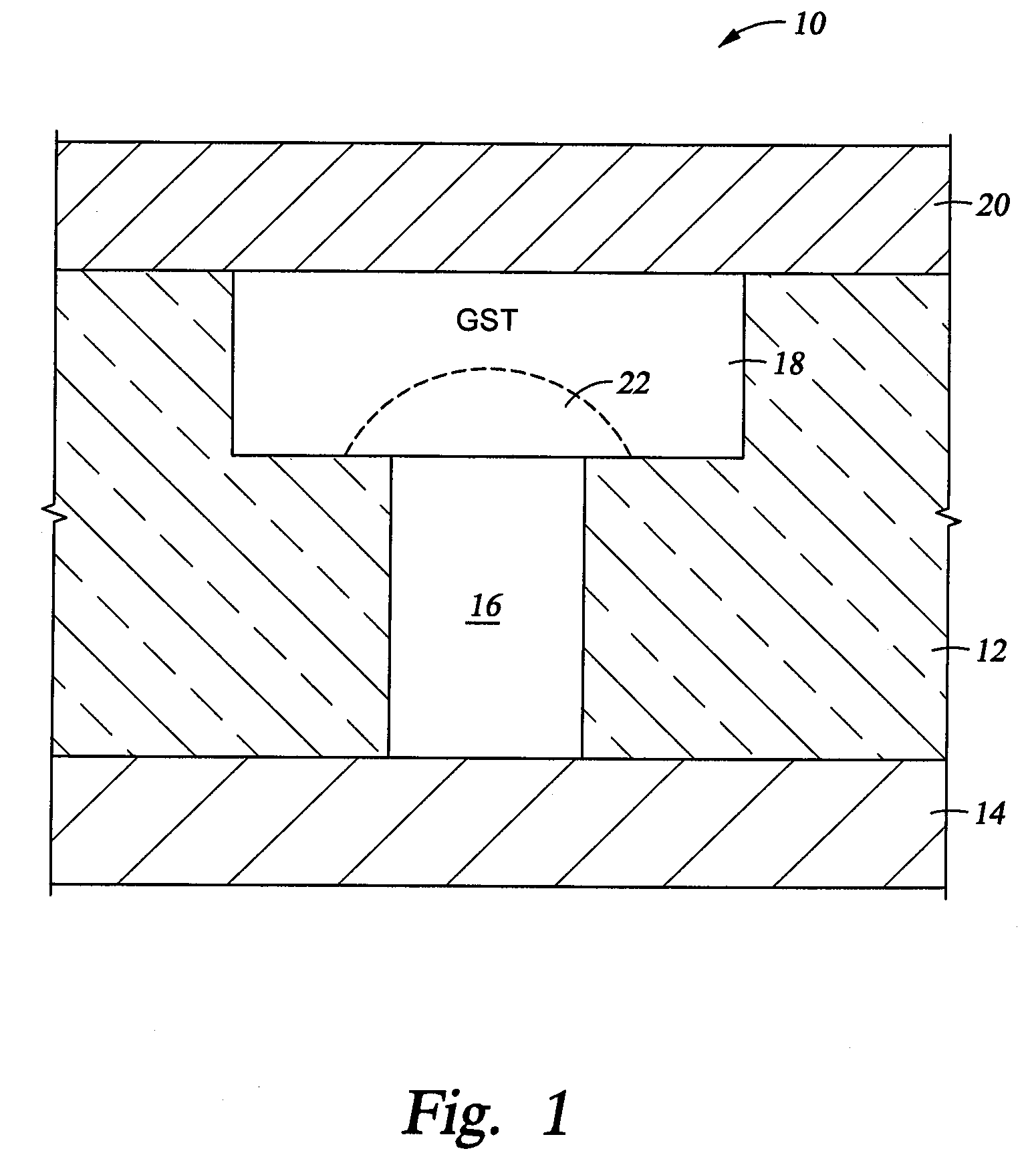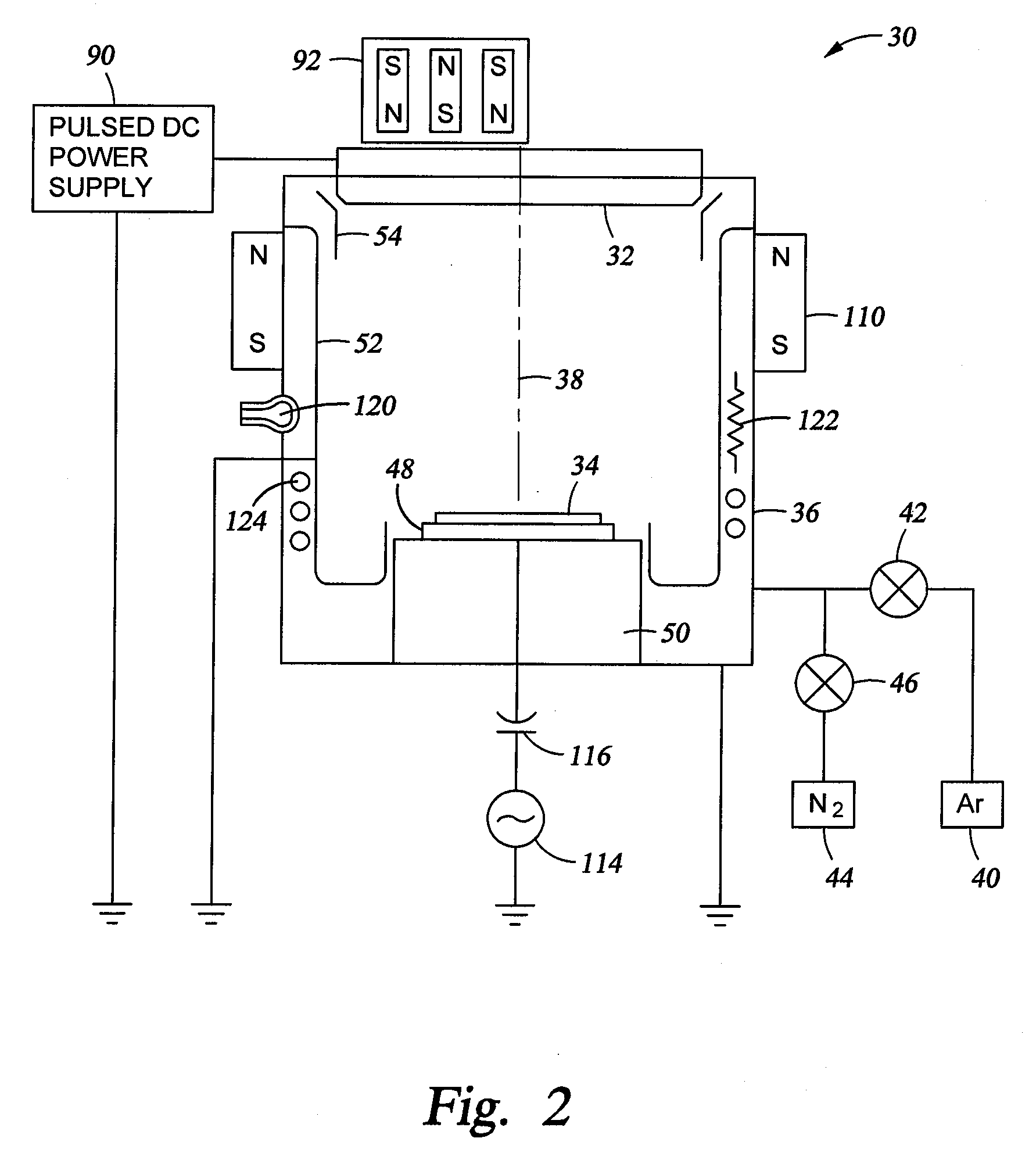Sputtering of thermally resistive materials including metal chalcogenides
a technology of chalcogenide and sputtering, which is applied in the direction of sputtering coating, vacuum evaporation coating, coating, etc., can solve the problems of reducing the uniformity of sputtering, increasing the heat of the target, and increasing the target power, so as to reduce the thermal load and low thermal conductivity
- Summary
- Abstract
- Description
- Claims
- Application Information
AI Technical Summary
Benefits of technology
Problems solved by technology
Method used
Image
Examples
Embodiment Construction
[0019]An example of a phase-change memory (PCM) cell 10 is illustrated in the cross-sectional view of FIG. 1 although the invention is not limited to such a structure. A dielectric layer 12, for example, of silicon oxide, is grown over a bottom electrode 14. A vertical structure is etched through the dielectric layer 12. A via 16 in the lower portion is filled with a metal to contact the bottom electrode 14. A wider plug 18 at the top of the dielectric layer 16 and contacting and overhanging the via 16 is filled with a phase-change material, such as the metal chalcogenide germanium antimony telluride (GST). A top electrode is 20 is deposited over the GST plug 18.
[0020]In operation, a short electrical pulse is applied through the electrodes 14, 20 to the GST plug 18 to cause a phase-change region 22 to melt. The remainder of the GST plug 18 is preferably always in the conductive crystalline state. Depending on whether the melting pulse is short or long, the phase-change region 22 eit...
PUM
| Property | Measurement | Unit |
|---|---|---|
| temperature | aaaaa | aaaaa |
| temperature | aaaaa | aaaaa |
| temperature | aaaaa | aaaaa |
Abstract
Description
Claims
Application Information
 Login to View More
Login to View More - R&D
- Intellectual Property
- Life Sciences
- Materials
- Tech Scout
- Unparalleled Data Quality
- Higher Quality Content
- 60% Fewer Hallucinations
Browse by: Latest US Patents, China's latest patents, Technical Efficacy Thesaurus, Application Domain, Technology Topic, Popular Technical Reports.
© 2025 PatSnap. All rights reserved.Legal|Privacy policy|Modern Slavery Act Transparency Statement|Sitemap|About US| Contact US: help@patsnap.com



